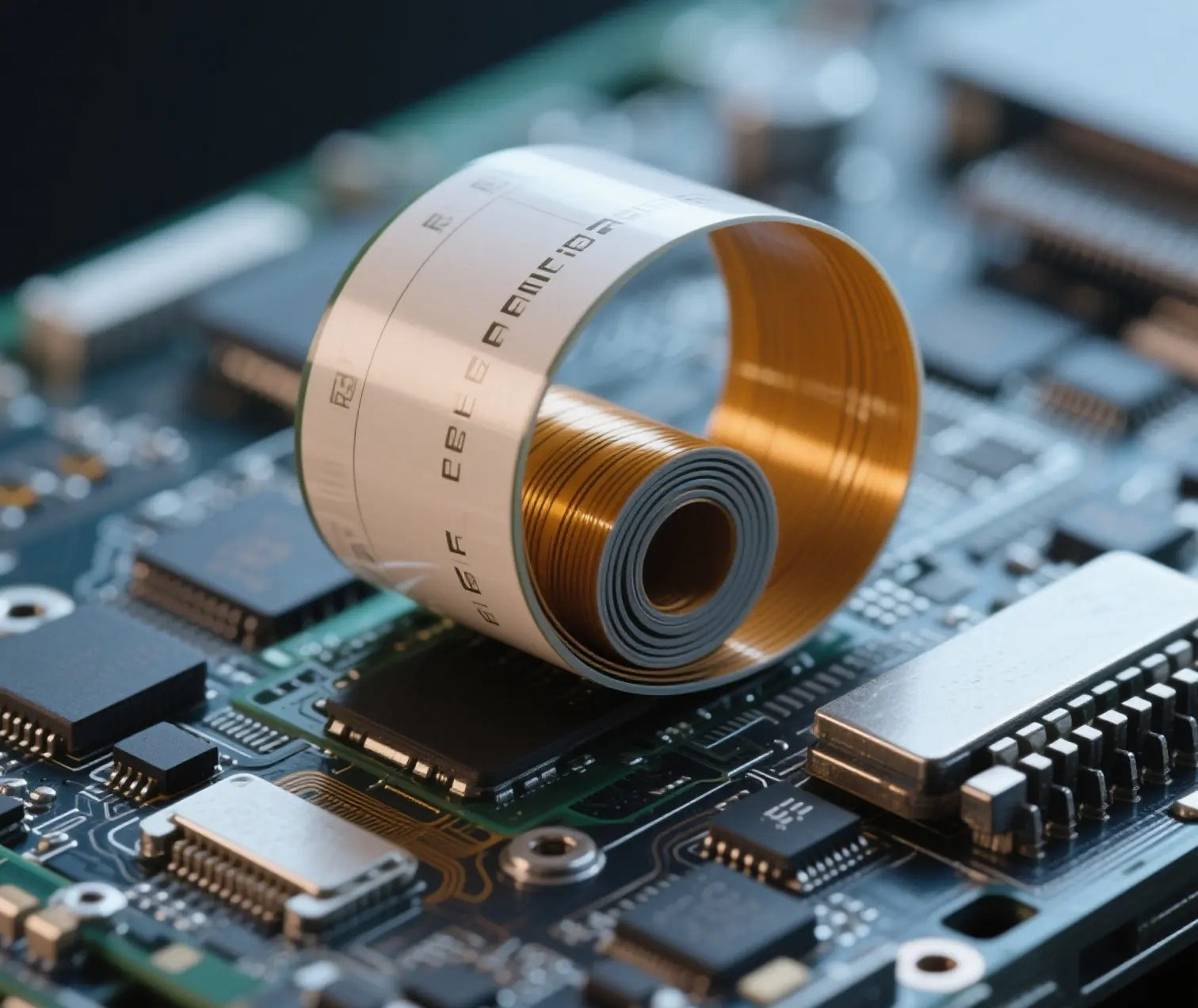Einführung in flexible gedruckte Schaltungen (FPC)
Flexible gedruckte Schaltungen (FPC) sind das Herzstück moderner Elektronik — kombinieren leicht, platzsparend, Und adaptiv Funktionen, die das Schaltungsdesign neu definieren.

Was ist FPC?
FPCs sind flexible Leiterplatten das kann sich verbiegen, Twist, und falten, Damit sind sie ideal für kompakte und dynamische Geräte.
Schlüsselattribute:
-
Flexibilität für komplizierte Designs
-
Leicht und dünn
-
Geeignet für enge Räume und 3D-Anordnungen
-
Beständig bei mechanischer Beanspruchung

FPC-Produktionsprozess
Die FPC-Herstellung umfasst Präzisionstechnik Und mehrstufige Fertigung. Hier ist ein typischer Arbeitsablauf:
1️⃣ Untergrundvorbereitung
Verwendung von Polyimid oder Polyester Filme
Mit Klebstoff oder klebstoffloser Methode laminierte Kupferfolie
2️⃣ Schaltungsdesign & Fotolithographie
CAD-Software generiert Schaltung
Die Belichtung mit UV-Licht durch eine Fotomaske definiert das Muster
3️⃣ Radierung
Chemische Lösung entfernt unerwünschtes Kupfer
Nach der Reinigung bleiben präzise Schaltkreise zurück
4️⃣ Bohren & Überzug
Mikrovias hergestellt über Laser- oder mechanisches Bohren
Galvanisieren sorgt für Leitfähigkeit
5️⃣ Coverlay-Anwendung
Polyimid-Deckschicht schützt vor Feuchtigkeit/Staub
Öffnungen für Lötpads
6️⃣ Oberflächenveredelung
Gemeinsame Ausführungen: Zustimmen, Bluten, OSP
7️⃣ Montage & Testen
Bauteile verlötet
Strenge QC-Tests
In FPC verwendete Materialien
| Komponente | Material | Eigenschaften |
|---|---|---|
| Substrat | Polyimid / Polyester | Thermische Stabilität, Flexibilität |
| Leiter | Kupferfolie | Hervorragende Leitfähigkeit |
| Klebstoffe | Epoxidharz / Acryl | Schichtverklebung |
| Schutzschicht | Polyimidfolien / LPI | Abschirmung des Stromkreises |
| Oberflächenbeschaffung | Zustimmen, OSP, Silber | Lötbarkeit & Haltbarkeit |
Wo FPCs verwendet werden
FPCs sind weit verbreitet in Branchen, in denen Zuverlässigkeit, Miniaturisierung, Und Flexibilität sind der Schlüssel.
🔌 Unterhaltungselektronik
-
Smartphones, Tabletten, Wearables
-
Ermöglicht faltbare Bildschirme & kompakte Einbauten
🚘 Automobil
-
Wird in Sensoren verwendet, Dashboards, Infotainment
-
Vibrationstolerant & Hitze
🏥 Medizinprodukte
-
Hörgeräte, Bildgebungswerkzeuge, Diagnosegeräte
🚀 Luft- und Raumfahrt & Verteidigung
-
Satelliten, Avionik, geschäftskritische Systeme
🤖 Industriell & Robotik
-
Installationen auf engstem Raum, Bewegungsanwendungen
🌐 IoT & Wearables
-
Smartwatches, Fitnessbänder, Smart-Tags
Vorteile von FPC
-
✅ Frei biegbar & faltbar – geeignet für 3D-Verkabelung
-
✅ Kompakt & leicht – perfekt für miniaturisierte Designs
-
✅ Gute Wärmeableitung & Lötbarkeit
-
✅ Reduzierte Montagekomplexität & Gesamtkosten
-
✅ Hart-Weich-Board-Hybriddesigns kann mehr Komponenten tragen

Nachteile von FPC
-
Hohe Anschaffungskosten – durch individuelles Design und Werkzeug
-
Schwierig zu modifizieren/reparieren – erfordert Zugriff auf die Basisfotomaske
-
Größenbeschränkungen – Produktionsanlagen können die Platinengröße begrenzen
-
Zerbrechlichkeit während der Handhabung – benötigt geschulte Techniker zum Löten/Nacharbeiten
Abschluss
Flexible gedruckte Schaltungen (FPC) revolutionieren die Elektronik, Bietet unübertroffene Anpassungsfähigkeit und Leistung. Ihre breite Akzeptanz in allen Branchen spiegelt ihre Bedeutung in der wider Zukunft der Miniaturisierung, zuverlässige elektronische Systeme.
Als die Nachfrage nach smarter, kleiner, und langlebigere Elektronik wächst, FPCs werden weiterhin ein wichtiger Faktor für Innovationen sein.
